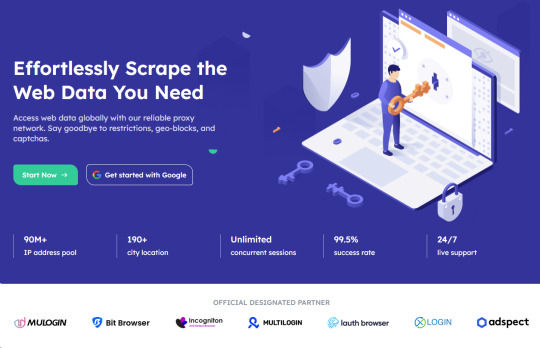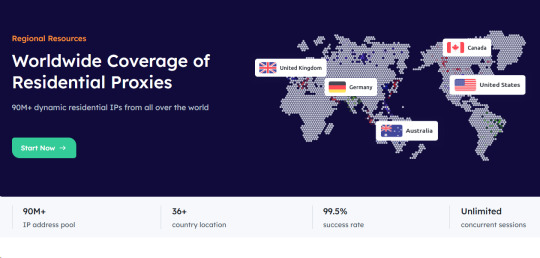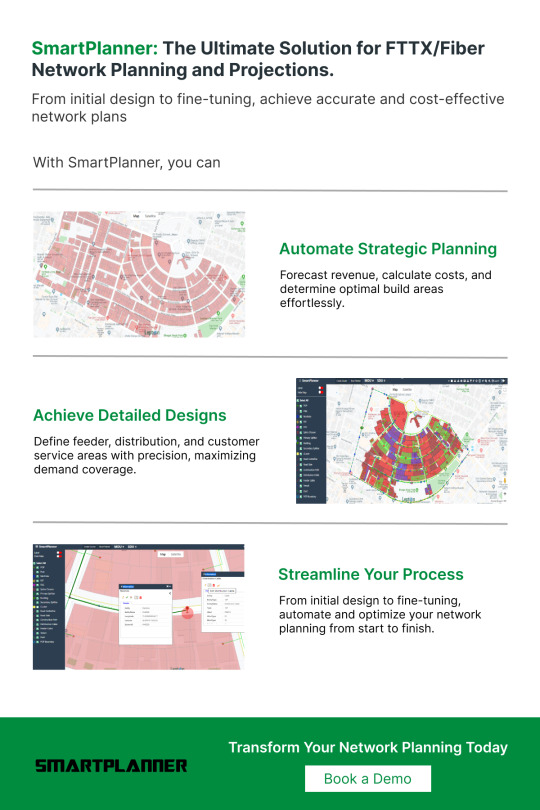#network optimization
Explore tagged Tumblr posts
Text
Multi-Cloud WAN Connections: Simplifying Cross-Provider Traffic Management

Today's digital landscape requires businesses to increasingly deploy workloads across multiple cloud vendors to leverage best-of-breed services, enhance resilience, and avoid vendor lock-in. However, managing data traffic across diverse cloud platforms presents unique challenges. Organizations risk inconsistent performance, security gaps, and rising costs without a unified strategy.
This post explores how to securely and efficiently route data across multiple cloud vendors, highlighting advanced strategies and best practices that ensure seamless, cost-effective connectivity in a multi-cloud environment.
The Growing Need for Multi-Cloud WAN
Organizations are adopting multi-cloud strategies to tap into specialized capabilities from different providers. Whether using Amazon Web Services for compute power, Microsoft Azure for enterprise applications, or Google Cloud for data analytics, a multi-cloud approach allows companies to optimize performance and cost. However, each cloud platform operates with its infrastructure, pricing model, and performance characteristics, which can lead to complexities in managing cross-provider connectivity.
A robust WAN strategy becomes essential in this context. A well-designed multi-cloud WAN provides the agility to dynamically route data, ensuring that each application accesses the best available cloud resource with minimal latency. This unified approach supports diverse business needs and reinforces operational continuity, even if one provider faces an outage or performance dip.
4 Cross-Provider Traffic-Management Challenges
Routing traffic across multiple cloud vendors is not without challenges. Traditional WAN architectures, often designed for single-cloud or on-premises environments, struggle with the dynamic demands of multi-cloud connectivity. Several issues can arise:
Inconsistent Performance: Different cloud regions or vendors can exhibit varying latency, bandwidth, and reliability. Businesses may suffer from performance bottlenecks without a mechanism to automatically detect and adapt to these variations.
Complex Security Requirements: Each cloud platform has its security protocols. Maintaining consistent encryption, authentication, and compliance standards becomes challenging when traffic moves between providers.
Cost Implications: Data transfer fees—especially for outbound traffic—can vary dramatically between providers. Inefficient routing can lead to unnecessary egress charges that inflate operational costs.
Fragmented Visibility: Without centralized monitoring, tracking performance and troubleshooting issues across disparate cloud environments can be extremely difficult, leading to slower reaction times when problems arise.
These challenges underscore the need for an intelligent, automated solution to seamlessly manage traffic across multi-cloud environments while ensuring security and cost efficiency.
5 Strategies for Secure and Efficient Routing
To overcome these challenges, organizations must adopt several advanced strategies:
1.Implementing SD-WAN Solutions
Software-Defined WAN (SD-WAN) is a cornerstone technology for multi-cloud connectivity. SD-WAN decouples network control from the underlying hardware, enabling centralized, policy-driven traffic management across diverse connections. With SD-WAN, organizations can:
Dynamically route traffic: Real-time performance metrics help SD-WAN controllers choose the best path for each application, switching automatically between providers if necessary.
Ensure failover: If one link degrades or fails, SD-WAN instantly reroutes traffic through alternative paths, ensuring continuous service.
Prioritize critical applications: By applying Quality of Service (QoS) policies, SD-WAN can prioritize latency-sensitive applications such as VoIP or video conferencing.
2. Using Traffic Shaping and QoS Policies
Effective traffic management requires more than dynamic routing; it demands intelligent bandwidth allocation. Traffic shaping techniques control data flow by prioritizing mission-critical traffic over less urgent applications. Implementing QoS policies ensures that critical applications receive the necessary bandwidth, even during periods of high demand. For instance, prioritize video conferencing traffic to reduce jitter and latency while scheduling bulk data transfers during off-peak times.
3. Establishing Redundant Paths
Redundancy is key to a resilient multi-cloud WAN. Businesses should not rely solely on a single connection between cloud providers or regions. Instead, consider establishing multiple data paths to provide a safety net, like using a mix of MPLS, broadband, and 4G/5G links to create diverse routes. With redundant connections, if one pathway experiences congestion or a failure, traffic can seamlessly switch to an alternative route without affecting performance.
4. Enforcing Consistent Security Policies
When data moves between multiple cloud providers, ensuring consistent security across all paths is critical. Implementing end-to-end encryption and a zero-trust framework helps protect data in transit. Additionally, security policies must be uniformly applied—regardless of the cloud vendor—to prevent vulnerabilities during data transfers. Automated security checks and centralized management tools can monitor for any deviations and trigger alerts or corrective actions when necessary.
5. Centralizing Monitoring and Analytics
Centralized monitoring provides a unified view of the entire WAN, regardless of how many cloud vendors are involved. Tools that aggregate performance metrics, cost data, and security alerts enable IT teams to troubleshoot issues quickly and optimize traffic flows continuously. Real-time dashboards that display latency, throughput, and error rates across all cloud links help maintain performance standards and prevent service interruptions. Moreover, historical analytics can inform future capacity planning and cost management decisions.
Best Practices for Managing Multi-Cloud WAN Connections
Adopting a multi-cloud WAN strategy is not a one-size-fits-all solution. Instead, organizations should tailor their approach to fit their specific needs:
Map Your Cloud Landscape:Start by documenting all cloud vendors, regions, and the applications they host. Understanding your current environment is crucial for identifying potential performance gaps and cost drivers.
Define Performance Metrics:Establish clear benchmarks for latency, uptime, and throughput. These metrics will help you assess whether your multi-cloud WAN performs as expected and highlight improvement areas.
Implement Dynamic Routing and QoS:Deploy SD-WAN solutions that support dynamic path selection and prioritize critical applications, ensuring each data packet finds the best route across your multi-cloud environment.
Enforce Uniform Security:Use centralized security policies to manage encryption, authentication, and compliance across all cloud connections. This action protects sensitive data and streamlines management across multiple vendors.
Leverage Automated Monitoring:Invest in tools that provide real-time visibility into your WAN's performance and cost metrics. Automated alerts and detailed dashboards allow quick responses to issues, preventing minor problems from becoming significant disruptions.
Continuously Review and Optimize: Regularly review your multi-cloud WAN strategy and adjust based on performance data and evolving business needs. Iterative improvements ensure that your network remains both agile and cost-efficient over time.
Optimize Your Multi-Cloud WAN Strategy
As businesses navigate an increasingly digital and distributed environment, securely and efficiently managing data across multiple cloud vendors becomes crucial. An intelligent WAN, equipped with SD-WAN, dynamic routing, and robust security measures, can transform network performance and cost efficiency. By centralizing monitoring and enforcing uniform security policies, companies can maintain seamless connectivity, reduce latency, and manage costs effectively—even in the face of evolving multi-cloud and 5G demands.
Still, optimizing your multi-cloud WAN strategy requires specialized skills and knowledge. Given that fact, consider hiring a telecom expense management partner. A business like zLinq helps mid-market enterprises master these complexities by offering expert-led network assessments, strategic vendor negotiations, and tailored integration solutions. Their hands-on approach ensures the optimization of every element of your WAN for both performance and cost efficiency. If you're ready to future-proof your multi-cloud connectivity and drive significant ROI from your telecom investments, contact zLinq today to discover how their innovative solutions can elevate your network strategy.
0 notes
Text
Network Optimization
For logistics professionals seeking to optimize or design their transportation network with cost, transit time, and emission savings in mind.
0 notes
Text
Optimal Linkage Selection in Network Design: Enhancing Supply Chain Efficiency

Optimal linkage selection is a critical component of network design, focusing on identifying the best routes from factories to central warehouses, regional warehouses, and ultimately to customers. By evaluating different possible routes and modes of transportation, network design solutions help businesses find the most cost-effective linkages that enhance overall supply chain efficiency.
The selection process involves analyzing various factors, including mode-wise costs, volume discounts, and lead times. These elements are crucial in optimizing the supply chain’s overall performance. For instance, selecting transportation modes with volume discounts can significantly reduce costs, while choosing routes with shorter lead times can improve delivery efficiency and enhance customer satisfaction. By strategically managing these factors, companies can reduce transportation costs, improve delivery times, and boost service levels, thereby achieving a competitive edge in the market.
Network design tools also consider service level requirements to ensure that the chosen linkages align with the company’s goals for customer satisfaction. Maintaining high service levels is essential for meeting customer expectations and sustaining business growth. By optimizing linkages, companies can ensure timely deliveries, thereby improving reliability and fostering customer loyalty.
Moreover, this holistic approach to linkage selection streamlines operations, supports sustainable growth, and minimizes waste and inefficiencies. A well-optimized supply chain not only reduces costs but also enhances operational agility, allowing companies to adapt to market fluctuations and unforeseen disruptions quickly. This flexibility is vital in maintaining continuity and resilience in supply chain operations.
In addition to cost considerations, network design solutions evaluate the environmental impact of different transportation modes and routes. This evaluation promotes the use of greener transportation options where feasible, such as rail or sea freight, over less environmentally friendly modes like air transport. By incorporating sustainability into the linkage selection process, businesses align with corporate social responsibility goals and regulatory requirements. This approach enhances the company’s reputation and ensures compliance with environmental regulations, positioning the company as a responsible and forward-thinking player in the industry.
By continuously monitoring and adjusting linkages, companies can respond swiftly to changes in market demand, fuel prices, and other external factors that affect the supply chain. This adaptability is crucial for maintaining an efficient and resilient supply chain capable of delivering high service levels despite external challenges. For example, during sudden market demand surges or supply disruptions, having an optimized and flexible network enables companies to reroute shipments effectively, avoiding delays and maintaining customer satisfaction.
Technological advancements in network design, such as predictive analytics and real-time data monitoring, further enhance linkage selection. These tools provide actionable insights, enabling companies to make data-driven decisions that improve supply chain efficiency and performance. By leveraging these technologies, businesses can continuously refine their linkages, ensuring they remain optimal and aligned with evolving business needs.
In summary, optimal linkage selection in network design is vital for enhancing supply chain efficiency. By evaluating cost, service levels, and environmental impact, businesses can identify the best routes and modes of transportation. This strategic approach reduces costs, improves delivery times, and supports sustainable operations, ensuring that the supply chain remains robust and competitive in a dynamic market.
0 notes
Text
How Cross-Border Ecommerce Live Streaming Leverages Proxies' IPs
In the wave of cross-border e-commerce, live streaming with goods has become an efficient grip for merchants to expand their channels.
Through live broadcasting to display products, merchants can interact with global audiences in real time, quickly enhance product awareness and directly drive sales. However, cross-border live broadcasting brings network challenges is a big problem: network delays, lag, regional restrictions and other issues, often make the live effect greatly reduced.
At this time, Proxies IP is especially important. It can optimize the transmission of the network, support the switching of geographic location, to ensure that the live broadcast is more stable and smooth. I will take you to talk in detail about the practical role of Proxies in cross-border e-commerce live broadcast, to help merchants and enterprises to realize a "borderless" live broadcast.
What Proxies IP solves for cross-border live streaming

Cross-border live streaming differs from local live streaming in terms of network requirements and faces more complex challenges. The role of Proxies IP can be summarized in three simple ways:
Stable connection, so that the live broadcast is no longer stuck,in cross-border live broadcast, network instability brought about by the delay problem is very common, especially when the live audience around the world, long-distance network transmission is more likely to have problems. Proxies can shorten the transmission path by relaying data through the nearest node, thus reducing the delay and ensuring a smooth picture. This stable network connection is especially important for the viewing experience.
On-demand positioning switching for precise coverage of target marketsUsing Proxies IP, you can switch nodes on-demand to help merchants easily reach users in different countries and regions. For example, in Asian and European markets, merchants can use localized content and regional offers to attract users' attention. This flexible positioning allows brands to display content that is more relevant to local needs based on the preferences of different markets, increasing audience engagement.
Support high concurrency viewing, goodbye to live peak "congestion"Whenever promotions, new activities of the live peak hours, the number of viewers increased steeply, and Proxies IP can be distributed load balancing, decentralized access pressure, so that a large number of users at the same time to access the same time does not lag. In this way, the audience experience is not affected, the live sales conversion is also more secure.
How to use Proxies IP flexibly in cross-border e-commerce live streaming?

To get the best out of Proxies IP for cross-border live streaming, merchants can arrange it like this in the pre-live stage:
Selection of nodes suitable for the target market and testing of network quality
Before starting the broadcast, select nodes with similar locations to the target market for network testing to ensure that the live broadcast can give viewers smooth and clear images. For example, if the target audience is in North America and Europe, prioritizing high-quality nodes in these regions can effectively reduce latency.
Implementation Recommendation: Detect the network stability of each node through the network latency monitoring tool, and prioritize the nodes with low latency and stable network to ensure the live broadcast experience.
Adjust live content to viewers' regional preferences
Proxies IP supports the selection of specific nodes based on markets, giving merchants the flexibility to adapt content to audience preferences. For example, for the North American market, you can focus on promoting high-tech products, while the Asian market can focus more on beauty products.
Implementation suggestions: before the start of the broadcast, adjust the product content of the live broadcast according to the preferences of the target audience, relying on the node switching function of Proxies IP, so that viewers in each market can see the content that is more compatible with their own needs, and enhance the attractiveness of the live broadcast.
Real-time data tracking to optimize interaction and conversion strategies when appropriate

Obtaining real-time audience data through Proxies IP can help merchants analyze the engagement of viewers in each market, such as viewing hours and number of interactions. Based on the feedback from different regions, merchants can adjust interactive content and promotional efforts in a timely manner, such as distributing exclusive offers to more active markets to attract more purchases.
Implementation Suggestion: Utilize data monitoring tools combined with Proxies IP's real-time tracking function to keep an eye on viewer interaction in real time and adjust content strategy in a timely manner based on feedback to maintain viewer engagement and stickiness.
Cross-device and cross-platform testing to ensure a consistent viewing experience
Before the official live broadcast, merchants can simulate the viewing experience on various types of devices through Proxies IP to ensure that the live content is played smoothly on PC, cell phones, tablets and other devices. This can avoid the differences in viewing effect caused by compatibility problems between different devices, and further optimize the user experience.
Implementation recommendations: Select different devices and platforms for live testing, paying special attention to the clarity and response speed of the screen and audio to avoid affecting user viewing due to equipment differences.
Other details to keep in mind during live streaming
When doing cross-border live streaming on a global scale, it is crucial to find the right anchor. Anchors not only need to master the local language, but also have a sense of camera and affinity, which can make the audience feel close and credible. Whether in the Southeast Asian market, or North American and European markets, anchors who can mingle with the audience are more likely to drive sales.

In addition to introducing products, anchors also need to be flexible in responding to Rotating on air. For example, when the audience interaction is active, timely introduction of some limited-time discounts or small benefits, often better stimulate the purchase interest. At the same time, the habits of viewers in different countries are different. American viewers usually like a direct, dry introduction, European viewers may pay attention to product details, while Southeast Asian viewers favor a relaxed and casual chat atmosphere. Therefore, anchors need to adjust their interaction according to the audience's preferences, so that people can participate more naturally.
In order to make the live broadcast run smoothly, it is helpful to use local Proxies IP to monitor the data in real time. For example, you can switch to different regions via Proxies IP to check the local display effect and price of the products to ensure that the product price is consistent or in line with the local market expectation. In this way, not only can you better manage the pricing strategy for different markets around the world, but you can also track viewer engagement and purchasing behavior in real time, providing data to support your optimization strategy for the next live broadcast.

It's also important to maintain a natural atmosphere of communication during global live broadcasts. Avoiding a pushy sales pitch and introducing products and sharing usage feelings more as a friend can better win trust, especially among Southeast Asian and European viewers, who are more likely to recognize this approach. With these details under control and the support of Proxies IP, cross-border live broadcasting is not only smoother, but also brings the brand and the audience one step closer.
What should I look for when choosing a Proxies IP service?
High-quality Proxies IP services play a decisive role in the effectiveness of cross-border live streaming. Here are a few factors you should focus on when choosing a Proxies IP service:
Global Node Coverage: Ensure that the Proxies IP service provider's node coverage is wide enough so that nodes can be selected nearby in different markets to guarantee network stability.
High Concurrency Support: With a large number of viewers during peak hours, Proxies need to support high concurrency access to ensure that they do not drop out even when the traffic peaks.
Privacy and SecureProxies: Proxy IP service providers are required to provide privacy protection to prevent data from being interfered with or leaked during transmission and to ensure the security of the live broadcast process.

In cross-border e-commerce live broadcast, using the right Proxies IP can make the live broadcast twice as effective with half the effort. At this time, PROXY CC Residential Proxies can be a reliable choice for merchants. PROXY CC supports flexible selection of Proxies from 195 countries and regions around the world. PROXY CC supports flexible selection of proxy nodes from 195 countries and regions around the world, and the service covers 90 million active IP resources, providing precise location selection by country, region and even city to meet the high demand of cross-border live broadcasting.

As a leading IP Proxies service provider, PROXY CC not only supports high concurrency processing, but also provides unlimited bandwidth and number of devices to guarantee network stability for cross-border live broadcasting. Merchants can easily switch to the local IP of the target market through PROXY CC, which not only allows them to monitor the local live streaming effect, traffic situation and product pricing in real time, but also ensures smooth live streaming images and the best viewing experience for viewers.
To date, PROXY CC has served more than 20,000 individual users and more than 100 corporate users, with one of the largest IP pools, uptime and availability in the world. Relying on PROXY CC Residential Proxies , merchants can easily break through the limitations and realize the efficient conversion of live streaming with goods in different markets, bringing more business opportunities and market growth for brands going overseas.

Click on the link to try it now! Contact customer service at the end of the trial and get an extra discount!
Conclusion
Proxies IP technology brings a series of optimizations to cross-border live streaming, which not only guarantees network smoothness, but also enables flexible geographic coverage and high concurrency support. These key factors make it easier for brands to reach global users and provide strong support for e-commerce live streaming to expand in international markets.
#cross-border e-commerce live streaming#Proxies IP application#network optimization#high concurrency processing#brands going overseas
0 notes
Text

Join Lepton Software at India Mobile Congress 2024, (Official GIS Partner) as we showcase our GIS-Powered Telecom Solutions.
NetworkAccess - Fiber Planning & Design SmartCampus - 3D network planning rfMAP - 3D/2.5 Maps Coverage, RF Planning Tool. Click to learn more: https://leptonsoftware.com/
#lepton at imc 2024#lepton software#imc 2024#india mobile congress 2024#telecom events in india#telecom event#5g planning#fiber planning#network optimization#gis tools#gis software#gis solutions
0 notes
Text
#it company dubai#Network Management#Business Efficiency#IT Infrastructure#Network Security#Downtime Prevention#Scalable Networks#IT Solutions#Network Optimization#Cybersecurity#Business Growth
0 notes
Text
Cisco modular switches network performance, network optimization solutions, Radiant Cisco partner
Learn how Cisco modular switches enhance network performance. Find Cisco switch prices, availability in India, and how Radiant assists businesses in optimizing network operations.

#Cisco modular switches performance enhancement#network optimization#solutions#Cisco India#Radiant Cisco partner
0 notes
Text

Lepton Software's SmartPlanner offers advanced tools for accurate and efficient FTTX/fiber network planning, featuring interactive maps and comprehensive network analysis. Enhance your network with precise line of sight analysis and sector-level macro-analytics. Learn more about our innovative solutions at Lepton Software's SmartInventory and NetworkAccess.
#smartplanner#network automation#network optimization#network planning#network design#telecom#lepton software#fiber planning#network planning tool#fiber planning tool#gis
0 notes
Text
Empowering Telecom Transformation through Expert Consultation
In the dynamic world of telecommunications, our Advisory and Consulting services are the catalysts for change and innovation. We delve into the complexities of telecom, offering strategic insights for MVNOs, MVNEs, private networks, and enterprises embracing digital transformation. We concentrate on advanced technologies like 5G, IoT, AI, and ML.
Our team of experts is committed to providing strategic guidance and innovative solutions that help our clients succeed in the digital age. We believe in empowering our clients with the knowledge and tools they need to navigate the complex telecom landscape and achieve their business objectives.
Our digital transformation strategy is tailored to meet the unique demands of the telecom sector. We guide you through the process of optimizing networks, enhancing service delivery, and revolutionizing customer experiences. Our approach ensures that your digital strategy is not only robust but also scalable, keeping you competitive in the rapidly evolving telecom landscape.
Advisory and consulting services to navigate digital transformation | Csmart | Covalensedigital
0 notes
Text
"Telecom Engineering Trends Unveiled by EIIR Trends: Navigating the Evolving Landscape"
Explore the cutting-edge insights and analyses curated by EIIR Trends in the realm of Telecom Engineering. Our platform delves into the dynamic trends shaping the telecommunications industry, covering everything from emerging technologies to market shifts. Stay ahead in the fast-paced world of telecom engineering with in-depth articles, reports, and thought leadership pieces. Whether you're an industry professional, enterprise decision-maker, or technology enthusiast, discover the pulse of Telecom Engineering with EIIR Trends.
0 notes
Text
So the reason I've been doing these pixelated images isn't just because I like how they look but because the sheer amount of data you save this way is incredible. For instance

This image is 710 kilobytes

This image is 8 kilobytes which is around 1% the size.
Put another way the first image would take about 2,840 network packets (and about 12 minutes) to send over LoRa while the second would take about 32 packets (and about half a minute)
41 notes
·
View notes
Text
Optimizing Multi-Echelon Supply Chains through Effective Network Design

In today’s dynamic market, designing an optimal multi-echelon supply chain network is critical for balancing cost efficiency and service levels. Network design solutions play a pivotal role in determining the right number of echelons within the distribution network. By evaluating variabilities and optimizing total costs of freight, warehousing, inventories, and manufacturing, businesses can achieve an optimal network configuration.
A multi-echelon supply chain involves multiple layers of warehouses and distribution centers between the manufacturing facility and the end customer. Through network design, companies can assess the trade-offs between maintaining multiple echelons versus consolidating into fewer layers. This optimization ensures that products reach the market efficiently while minimizing overall logistics costs and maintaining desired service levels.
Moreover, simulation of key supply chain drivers such as market demand fluctuations, tariffs, and lead times helps fine-tune the network design. By continuously adjusting the number and location of echelons, businesses can stay agile and responsive to changing market conditions.
A well-designed multi-echelon network also enhances flexibility and scalability, allowing companies to adapt to market growth or contractions without significant disruptions. It ensures that the supply chain can handle varying demand levels efficiently, avoiding both shortages and excess inventory. The integration of advanced analytics and real-time data monitoring further supports decision-making, enabling proactive adjustments to the network as needed.
By optimizing the multi-echelon structure, companies can achieve a balance between cost reduction and high service levels, ensuring competitive advantage in the market. The network design not only improves operational efficiency but also contributes to better customer satisfaction by ensuring timely deliveries and product availability.
Additionally, network design solutions facilitate simulations of various scenarios, including changes in tariffs, market demand, and transportation modes. This capability helps businesses prepare for potential disruptions and seize new opportunities. By leveraging these insights, companies can maintain a robust and resilient supply chain that adapts to evolving market conditions and customer expectations.
In summary, effective network design is crucial for optimizing multi-echelon supply chains. It enables businesses to strike the right balance between cost efficiency and service excellence, ensuring they remain competitive and responsive in a dynamic market landscape. By integrating advanced technologies and data-driven strategies, companies can continuously refine their network design, achieving sustainable growth and operational excellence in their supply chain operations.
0 notes
Quote
Sometimes we meet folks who appear rather plain, yet when they speak from a heart of service, love, compassion, and wisdom, they instantly become respected favorites.
Susan C. Young, The Art of Being: 8 Ways to Optimize Your Presence & Essence for Positive Impact
#quotes#Susan C. Young#The Art of Being: 8 Ways to Optimize Your Presence & Essence for Positive Impact#thepersonalwords#literature#life quotes#prose#lit#spilled ink#authenticity-quotes#communication-quotes#communication-skills#first-impressions#motivational-speaker#personality-development#relationship-quotes#social-networking#susan-young#trust
67 notes
·
View notes
Text

Fiber Planning: Key Consideration for Broadband and Deployment
This article into key considerations in fiber planning, future of optical fibers, the importance of network inventory management, and integration of telecom GIS to support broadband deployment.
Click to read more about Fiber Planning and Broadband Deployment.
#fiber#fttx#ftth#broadband deployement#fiber planning#network planning#network optimization#fiber deployment#lepton software#lepton maps#network inventory management#telecom#gis#data#map#maps#dataset
0 notes
Text




Wood Engraving Wednesday
CHICKENS!!
This 2021 engraving of a chicken threesome is aptly entitled Wary Optimism by Pennsylvania wood engraver and letterpress printer Andrew M. Moroz. Moroz is a member of the national American wood engravers society, the Wood Engravers' Network (WEN). This print appears in the catalog for the WEN Fourth Triennial Exhibition 2020-2022, juried by two of my Wisconsin colleagues, Tracy Honn, retired long-time director of the Silver Buckle Press (Madison), and Jim Moran, recently-retired Master Printer and Collections Officer at the Hamilton Wood Type and Printing Museum (Two Rivers). On wood engraving, Andrew Moroz writes:
Attracted by the liveliness of the marks and the degree of fineness the tools produce, I enjoy the methodical process of engraving with burins on the end-grain of maple. Subject matter draws from personal experience and interests, but is concerned primarily with a search for imagery that has universally held meaning.
Reflecting on jurying this show during the pandemic period, Tracy Honn writes:
I discovered my understanding of the work had changed because the world was reoriented. Thinking about the Wood Engravers Network helped remind me of the extra in the ordinary. . . . The current disruptions of life-as-we-knew-it happened abruptly and nearly simultaneously. It is the all-at-onceness of this crisis that reveals the black and white of our days. In the midst of a pandemic . . . we create places of safety through our imagination and activities of comfort. This is what wood engravers do all the time.
I am excited and deeply honored to serve as the juror for the Fifth Triennial Exhibition of the Wood Engravers' Network, 2022-2024!
View more engravings by members of the Wood Engraver's Network.
View more posts with wood engravings!
View more posts with CHICKENS!!
-- MAX, Head, Special Collections
#Wood Engraving Wednesday#wood engravings#wood engravers#Andrew M. Moroz#Wary Optimism#Wood Engravers' Network#WEN#WEN Fourth Triennial Exhibition#Tracy Honn#Jim Moran#exhibitions#exhibition catalogs#chickens#Chickens!#birds#birbs!
61 notes
·
View notes
Text
Solarpunk Sunday Suggestion:
Go to a meeting of your local direct action group
#solarpunk#hopepunk#environmentalism#social justice#cottagepunk#optimism#community#climate justice#bright future#tidalpunk#direct action#non-violence#civil disobedience#a22 network#letzegeneration#just stop oil#save old growth#restore suburban rail#dernière rénovation#insulate Britain#this is rigged#renovate Switzerland#extinction rebellion#solarpunksundays
82 notes
·
View notes